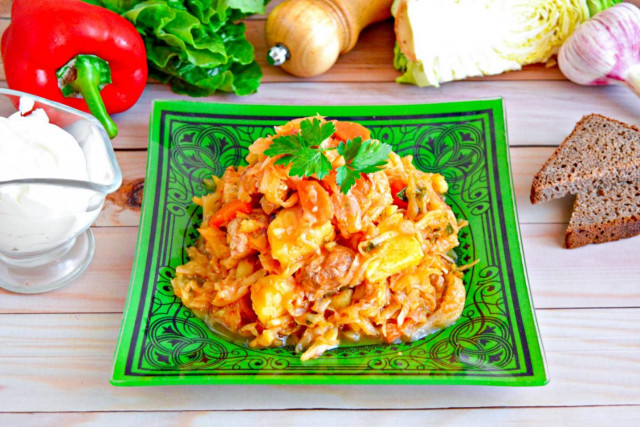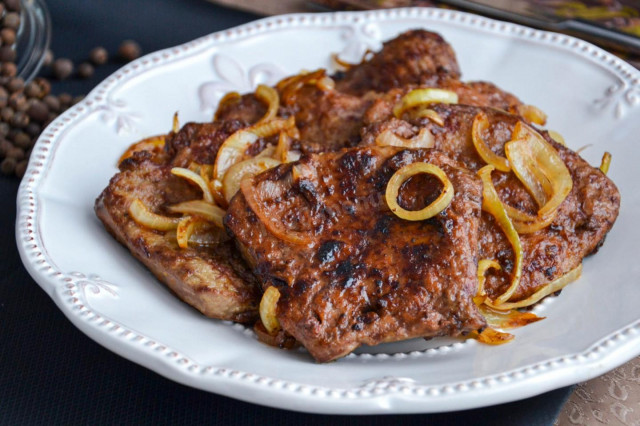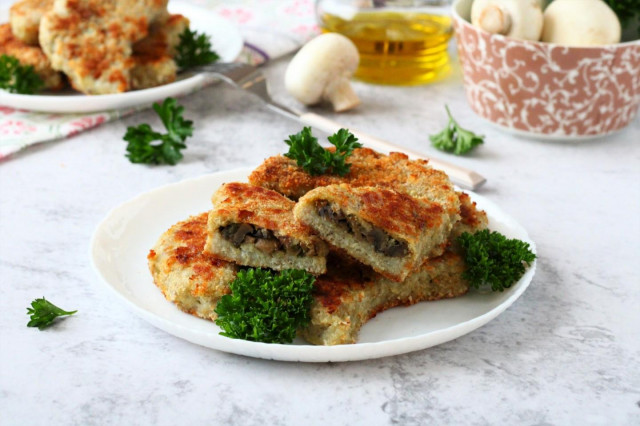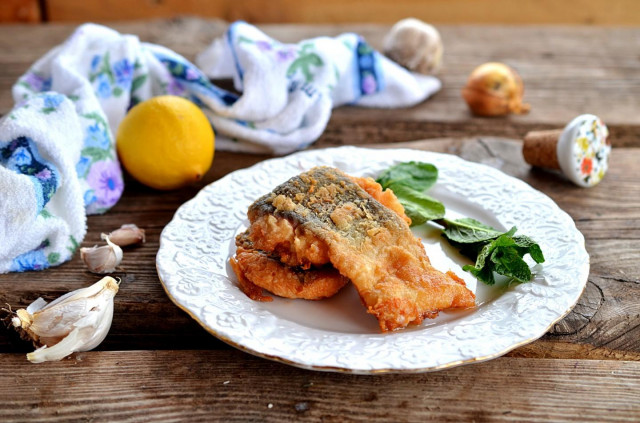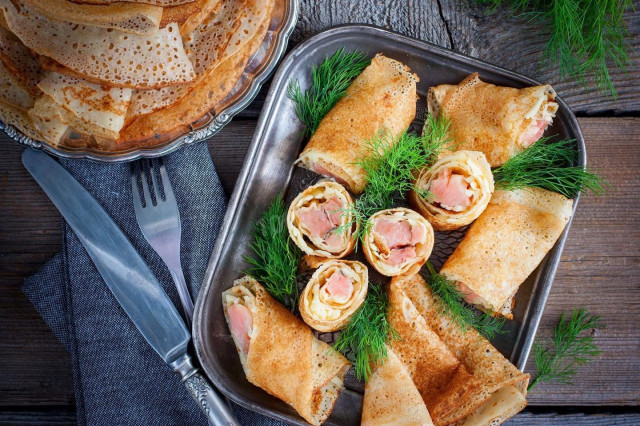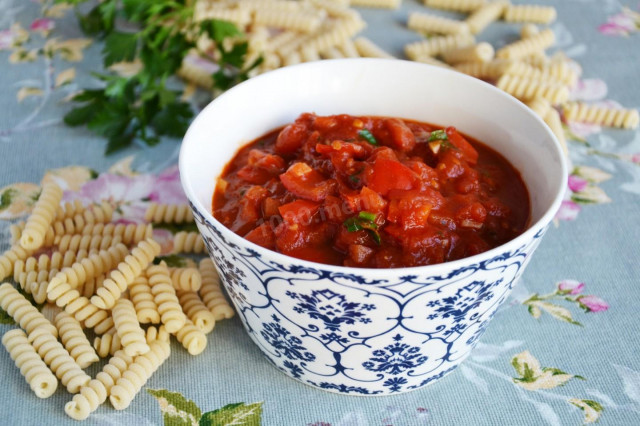Composition / ingredients
Step-by-step cooking
Step 1:
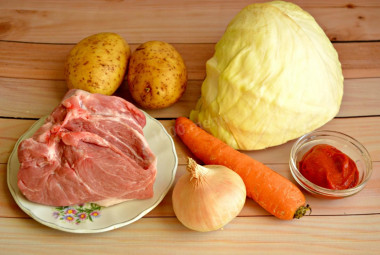
How to make a hodgepodge with cabbage potatoes and meat? Prepare the products. Take pork pulp, preferably with small fat layers, the hodgepodge will turn out juicier. Pre-wash and dry the vegetables.
Step 2:
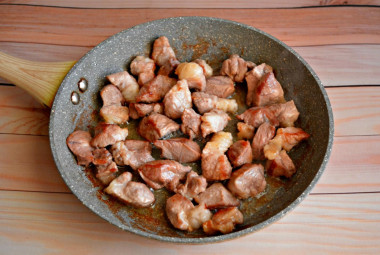
Wash the pork pulp and dry it well, and then cut into small pieces. Heat a frying pan over high heat, pour two tablespoons of vegetable oil on it and fry the meat for 10-15 minutes, until golden brown. At the same time, the meat will release its fat, which will come in handy later.
Step 3:
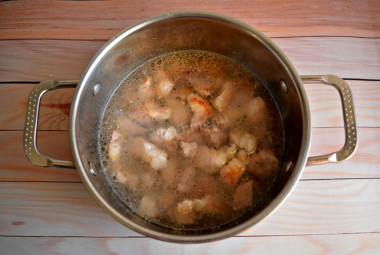
Put the meat in a saucepan with a thick bottom and pour a glass of water. Cook the meat for 10 minutes on low heat.
Step 4:
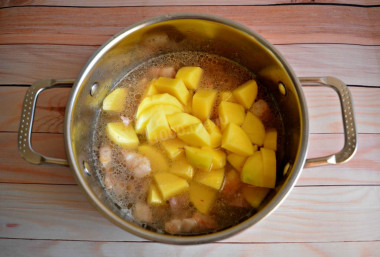
Peel the potatoes and cut into large cubes. Add the sliced potatoes to the meat.
Step 5:
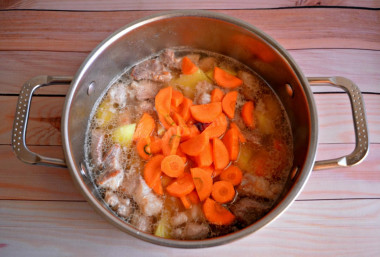
Peel the carrots and cut them into small pieces — circles or straws. At the same time with the potatoes, add the carrots to the hodgepodge. Put everything out together for another 10 minutes.
Step 6:
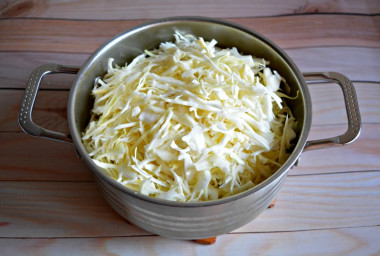
While the vegetables and meat are stewing, chop the cabbage thinly. To do this, you can use a special cabbage grater or a knife with a double blade. The cabbage cut in this way turns out to be very thin and cooks quickly. Send the chopped cabbage into a saucepan with the vegetables to stew.
Step 7:
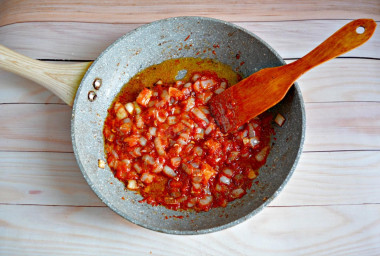
In the meantime, do the frying. Peel one large onion and finely chop it. Fry the onion in the fat released when frying meat. When the onion turns golden, add tomato paste to it. Fry everything together for a couple more minutes so that the tomato paste reveals its flavor. Add the tomato roast to the hodgepodge. Mix well and simmer for another 10-15 minutes.
Step 8:
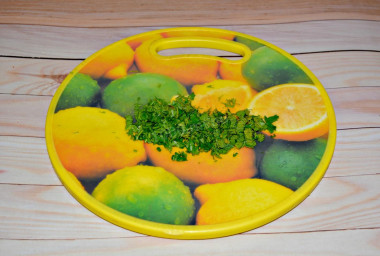
If desired, you can add any greens to the hodgepodge with cabbage, potatoes and meat. I added finely chopped parsley. Add the greens to the pan last, stir and immediately turn off the heat.
Step 9:
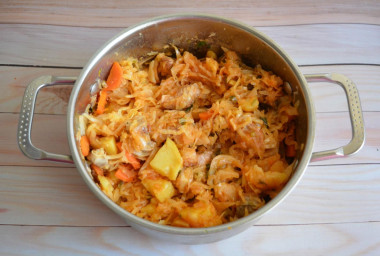
Let the hodgepodge brew a little and cool down, after 10-15 minutes you can serve it to the table. Bon appetit!
Wash the meat, be sure to dry it with a paper towel, otherwise excessive moisture will not allow it to fry - it will stew.
Tomato paste in this recipe can be replaced with tomatoes in their own juice, fresh tomatoes or ketchup.
Use oil with a high smoking temperature for frying! Any oils are useful only until a certain temperature is reached - the point of smoking, at which the oil begins to burn and toxic substances, including carcinogens, are formed in it.
Unrefined oils, with rare exceptions, have a low smoking point. There are a lot of unfiltered organic particles in them, which quickly begin to burn.
Refined oils are more resistant to heating, and their smoking point is higher. If you are going to cook food in the oven, on a frying pan or grill, make sure that you use oil with a high smoking point. The most common of the oils with a high smoking point: refined varieties of sunflower, olive and grape.
Caloric content of the products possible in the composition of the dish
- Onion - 41 kcal/100g
- Ripe potatoes - 80 kcal/100g
- Baked potatoes - 70 kcal/100g
- Mashed potatoes - 380 kcal/100g
- Boiled potatoes - 82 kcal/100g
- Potatoes in uniform - 74 kcal/100g
- Fried potatoes - 192 kcal/100g
- Green cabbage - 46 kcal/100g
- Fresh frozen green cabbage in a package - 45 kcal/100g
- Pork fat - 333 kcal/100g
- Pork meat - 357 kcal/100g
- Pork - low-fat roast - 184 kcal/100g
- Pork chop on a bone - 537 kcal/100g
- Pork - schnitzel - 352 kcal/100g
- Pork Shoulder - 593 kcal/100g
- Boar's leg - 113 kcal/100g
- Pork - 259 kcal/100g
- Carrots - 33 kcal/100g
- Dried carrots - 275 kcal/100g
- Boiled carrots - 25 kcal/100g
- Ground black pepper - 255 kcal/100g
- Parsley greens - 45 kcal/100g
- Vegetable oil - 873 kcal/100g
- Tomato paste - 28 kcal/100g
- Salt - 0 kcal/100g
- Water - 0 kcal/100g

